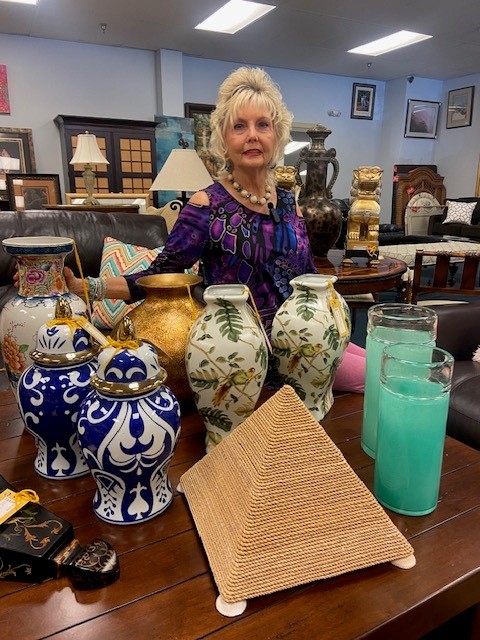In the world of interior design, eclectic style is often seen as a mix of unexpected elements that work together to form a unique and visually stimulating environment. It’s the kind of design where boundaries don’t exist, and personal expression takes center stage. But while eclectic interiors are bold and exciting, creating a cohesive look can be challenging. One of the most effective ways to tie everything together is through the thoughtful use of accessories.
In this blog, we’ll explore the core principles of eclectic design and how accessories can play a key role in curating a harmonious, yet diverse, space.
What is Eclectic Design?
At its heart, eclectic design is all about combining various styles, colors, textures, and periods to create a one-of-a-kind space. It allows you to blend modern with vintage, minimalism with maximalism, and everything in between. What makes this style so appealing is the freedom it offers—there are no strict rules. However, eclectic design still requires a sense of balance and cohesion to avoid a chaotic or disjointed look.
The Role of Accessories in Eclectic Spaces
Accessories in an eclectic space act as the glue that holds the design together. These small yet impactful items can provide the finishing touches that pull together a room full of contrasting elements. Here are a few ways to use accessories to enhance your eclectic design:
1. Color as a Unifying Element
Accessories are a great way to create visual harmony through color. While eclectic design often involves mixing a variety of hues, selecting accessories in a consistent color palette can bring the room together. For instance, if your room has vibrant furniture and bold patterns, opt for accessories in neutral tones to balance the energy. Alternatively, if your space leans toward more neutral or muted tones, brightly colored accessories can add an exciting pop without overwhelming the senses.
2. Texture and Material Mix
One of the joys of eclectic design is its ability to blend different materials. From wood and metal to glass and fabric, the mix of textures adds depth and dimension. Accessories like throw pillows, rugs, and curtains can introduce a variety of tactile experiences that enhance the room’s personality. For instance, pair a velvet throw with a rustic wooden coffee table or place a sleek glass vase on an antique console. This mixture of textures brings both comfort and character to the space.
3. Balance Between Bold and Subtle
A common challenge with eclectic design is finding the right balance between bold statement pieces and more subtle elements. Accessories help regulate this balance. For example, if you have a large, attention-grabbing piece of artwork or a vibrant patterned sofa, offset it with simple, understated accessories like a plain white vase, neutral-toned throws, or minimalistic lamps. Conversely, if the room leans toward simplicity, bold accessories like a vibrant area rug, oversized mirrors, or sculptural lighting can inject energy and create focal points.
4. Personalization Through Art and Collectibles
Eclectic design thrives on personality, and there’s no better way to infuse your space with individuality than through art and collectibles. Whether it’s vintage finds, travel souvenirs, or family heirlooms, these items add a story to your space. Display unique objects on shelves, hang curated art pieces on the walls, and scatter smaller items like trinkets or ceramics on coffee tables or mantels. Just ensure there’s a visual connection between these pieces—whether through color, shape, or theme—so they feel cohesive rather than cluttered.
5. Layering and Grouping
In eclectic design, more is often more, but layering and grouping accessories help prevent the space from feeling overwhelming. Instead of scattering individual pieces throughout the room, try grouping accessories in clusters. A group of candles, a tray of small collectibles, or a collection of framed photos can make a more substantial impact than a single item spread across the space. When layering, play with height, texture, and material to create a visually appealing arrangement.
6. Patterns and Prints
Patterns are a hallmark of eclectic design, but too many competing patterns can be overwhelming. Accessories like cushions, throws, and rugs provide an easy way to introduce patterns without dominating the room. You can play with scale—such as a large-patterned rug paired with smaller, more detailed pillow prints. Just be sure to limit the color palette so that the patterns feel intentional rather than clashing.
Tips for Accessorizing an Eclectic Space
– Edit ruthlessly: Not every accessory needs to be on display. Be selective with what you showcase to avoid visual clutter.
– Layer mindfully: When layering accessories, ensure there’s enough breathing room between items. Give each piece its moment to shine.
– Go bold but with intention: Don’t be afraid to add statement accessories, but ensure they contribute to the overall harmony of the space.
– Consider functionality: Accessories should not only be beautiful but also functional. Opt for items like decorative baskets or trays that can help with storage while adding style.
Conclusion
Eclectic design is the perfect way to express your individuality and love for the unexpected. While it embraces diversity, accessories play a crucial role in bringing balance and cohesion to the space. By carefully curating and layering accessories, you can create an eclectic home that feels both harmonious and deeply personal. Whether through color, texture, or sentimental collectibles, accessories are the key to transforming a collection of mismatched pieces into a beautifully curated space.


Recent Comments